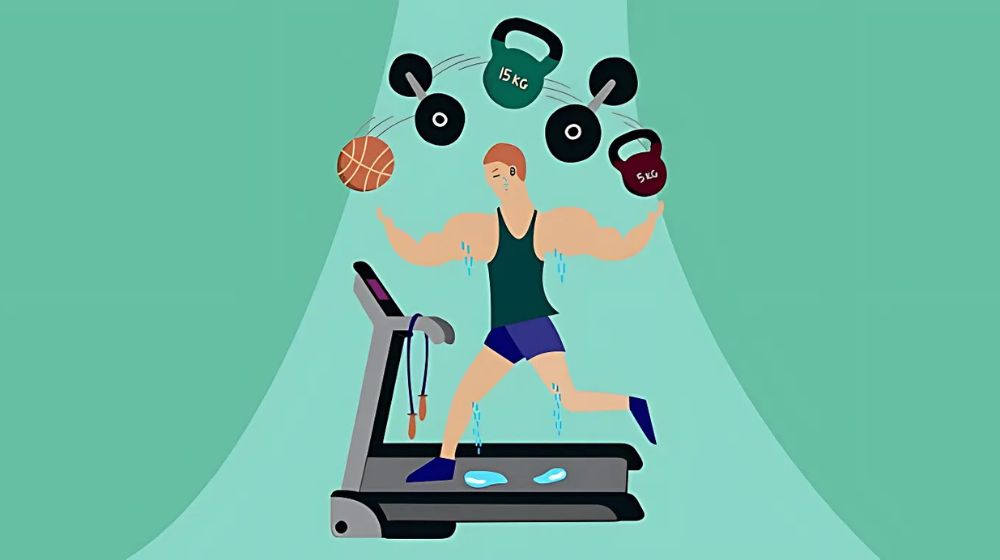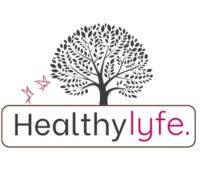Debunk 5 common fitness myths and learn effective strategies for weight loss, muscle building, and injury prevention for lasting results.
Introduction
In the world of fitness, there’s no shortage of advice, but not all of it is based on science. From old-school beliefs to trendy fitness fads, many myths persist that can mislead you on your fitness journey. These misconceptions can hinder your progress, waste time, or even lead to injury. In this article, we’ll debunk five common fitness myths to help you separate fact from fiction, so you can focus on what really works for your health and fitness goals.
Myth 1: “You Need to Work Out Every Day to See Results”

Many people believe that working out every day is the key to fast results, but this myth can actually hinder your progress. Your body needs time to recover, especially after intense workouts, and overtraining can lead to burnout, injury, and muscle fatigue.
The truth is, rest days are essential for muscle repair, growth, and overall fitness improvement. Depending on your fitness goals, 3-5 workouts a week with adequate rest in between can be just as effective—if not more—than daily training. Balance is key, and incorporating rest into your routine will help you build strength, improve endurance, and prevent overtraining.
Best Practices for Effective Workouts and Recovery
Prioritize Rest and Recovery
While consistency is important, it’s equally crucial to allow your body time to rest and recover. Incorporate rest days into your weekly routine and listen to your body when it signals fatigue. Recovery aids in muscle repair and reduces the risk of overtraining.
Incorporate Strength and Cardio
A balanced fitness routine includes both strength training and cardiovascular exercise. Strength training builds muscle and boosts metabolism, while cardio improves heart health and endurance. Aim for a mix of both for well-rounded fitness.
Focus on Proper Nutrition
Fueling your body with the right nutrients is key to maximizing performance and recovery. Ensure you’re getting enough protein for muscle repair, carbohydrates for energy, and healthy fats for inflammation reduction. Don’t forget hydration—it’s essential for muscle function and overall recovery.
Warm-Up and Cool Down
Always start with a warm-up to prepare your muscles for exercise and end with a cool-down to aid in recovery. Stretching and foam rolling after a workout can also reduce muscle soreness and improve flexibility.
Progress Gradually
Avoid jumping into intense workouts too quickly. Gradually increase the intensity, duration, and weights in your exercises to prevent injury and allow your body to adapt safely. Consistent, progressive overload is the best way to build strength and endurance over time.
Supporting Evidence for Best Practices in Fitness and Recovery
The Importance of Rest and Recovery
Studies show that recovery is essential for muscle repair and growth. According to research, overtraining without proper rest increases the risk of injury and can lead to burnout. Muscles need time to rebuild after strength training, and adequate rest helps maintain a balanced cortisol level, preventing chronic fatiguing Training and Cardio for Balanced Fitness
A combination of strength and cardiovascular training offers the most comprehensive benefits. Strength training helps build lean muscle mass and increases metabolism, while cardio enhances heart health, endurance, and fat loss. Research supports that incorporating both forms of exercise promotes overall fitness and helps achieve sustainable health outcomes .
Performance and Recovery
Proper nutrition significantly impacts workout performance and recovery. Protein aids in muscle repair, while carbohydrates restore glycogen stores that fuel exercise. Healthy fats reduce inflammation and support joint health. Hydration is equally important, as water aids in nutrient delivery and helps prevent muscle cramps .
Warm-Up and Cool Dos
Warm-ups and cool-downs help prevent injury and promote flexibility. Studies have shown that a proper warm-up increases blood flow to muscles, improving their ability to handle exercise, while cool-downs and stretching can reduce muscle soreness and enhance recovery .
Progressive Overload and Injtion
Progressive overload, where the intensity of workouts is gradually increased, is supported by research as an effective method for building strength and endurance safely. It helps the body adapt to higher intensity levels, reducing the likelihood of injury while continuously challenging muscles .
Myth 2: Spot Reduction Works for Fat Loss
The Truth About Targeting Fat

Many people believe that doing exercises targeting a specific area of the body can reduce fat in that area, a concept known as “spot reduction.” For example, doing countless crunches in hopes of losing belly fat. However, this is a common misconception and does not align with how the body burns fat.
Why Spot Reduction Doesn’t Work
Fat loss happens throughout the body as a whole, not in isolated areas. When you burn fat, it’s not possible to target specific regions. Instead, overall body fat reduction occurs through a combination of regular exercise (including both cardio and strength training) and proper nutrition.
The Importance of Overall Fat Loss
While strength exercises can tone and build muscle in specific areas, they don’t directly burn fat from those areas. To effectively reduce body fat, you need to create a calorie deficit through consistent physical activity and a balanced diet. Over time, this will lead to overall fat loss, including in stubborn areas.
What Actually Works for Fat Loss
Focus on Overall Calorie Deficit
The most effective way to lose fat is by creating a calorie deficit, which means you burn more calories than you consume. This can be achieved through a combination of diet and exercise. When you maintain a consistent calorie deficit over time, your body will begin to burn stored fat for energy, leading to fat loss across the entire body.
Combine Cardio and Strength Training
Incorporating both cardiovascular exercise and strength training into your fitness routine is essential for fat loss. Cardio helps burn calories and improve heart health, while strength training builds muscle, which in turn boosts your metabolism and helps you burn more calories at rest. Together, they create a powerful approach to fat loss.
Prioritize Nutrition
A balanced diet plays a crucial role in fat loss. Focus on nutrient-dense foods like lean proteins, whole grains, fruits, and vegetables, while limiting processed foods and added sugars. Monitoring portion sizes and eating in moderation will also help you stay within your desired calorie range for fat loss.
Be Consistent and Patient
Fat loss takes time, and results don’t happen overnight. Consistency is key in both your workout routine and nutrition. Small, sustainable changes over time will yield the best long-term results, so be patient and stay committed to your goals.
Supporting Evidence for Effective Fat Loss Strategies
Creating a Calorie Deficit for Fat Loss
Research consistently shows that a calorie deficit is essential for fat loss. Studies have demonstrated that when individuals consistently consume fewer calories than they expend, they experience a reduction in body fat. This principle remains the cornerstone of all fat loss strategies, supported by countless studies in nutrition and exercise science.
The Power of Cardio and Strength for Fat Loss
Studies indicate that a combination of cardiovascular exercise and strength training is highly effective for fat loss. Cardio workouts, such as running or cycling, burn calories during exercise, while strength training increases lean muscle mass, which can boost resting metabolic rate and improve long-term fat-burning efficiency. Research confirms that combining both types of exercise leads to greater fat loss than focusing on just one type alone.
Balanced Diet for Sustainable Fat Loss
Evidence shows that a balanced diet is crucial for fat loss. Consuming nutrient-dense foods rich in protein, fiber, and healthy fats supports fat-burning while helping to maintain muscle mass. A study published in the American Journal of Clinical Nutrition suggests that protein-rich diets help preserve muscle during weight loss, preventing the loss of lean mass while burning fat. Limiting processed foods and excess sugar is also shown to enhance fat loss and improve overall health.
Long-Term Commitment for Effective Fat Loss
Research supports that fat loss is a gradual process. Studies show that sustainable weight loss occurs when individuals adopt long-term lifestyle changes rather than engaging in short-term, extreme diets or exercise programs. According to a study in Obesity Reviews, those who make consistent, manageable adjustments to their diet and exercise routines see better long-term results compared to those who seek quick fixes. Consistency, patience, and gradual changes lead to healthier fat loss and greater success in maintaining results.
Myth 3: “Lifting Weights Makes You Bulky”
The Truth About Building Muscle

One of the most common myths about weightlifting is that it will automatically make you bulky, especially for women. However, building significant muscle mass requires more than just lifting weights—it involves a combination of consistent, heavy lifting, a specific diet, and often, years of training.
Why Weightlifting Doesn’t Make You Bulky
For most people, weightlifting alone won’t lead to bulkiness. Women, in particular, have lower levels of testosterone than men, which makes it harder for them to gain large amounts of muscle mass. Instead, weightlifting helps tone and strengthen muscles, improving muscle definition without the dramatic increase in size.
The Benefits of Weightlifting
Weightlifting is one of the most effective ways to improve overall strength, enhance metabolism, and boost fat loss. It helps build lean muscle mass, which increases your resting metabolic rate, meaning you’ll burn more calories even while at rest. Instead of making you bulky, weightlifting helps you develop a toned and sculpted physique.
Increased Strength and Muscle Mass
Weightlifting is one of the most effective ways to build strength and increase muscle mass. As you consistently lift weights, your muscles adapt by growing stronger and larger, which helps you perform daily tasks with greater ease. Building muscle also supports joint health and improves posture.
Enhanced Metabolism and Fat Loss
One of the biggest benefits of weightlifting is its ability to boost your metabolism. Muscle tissue burns more calories at rest than fat tissue, so by increasing muscle mass, your body burns more calories throughout the day, even when you’re not working out. This makes weightlifting an excellent tool for fat loss.
Improved Bone Density
Weightlifting puts stress on your bones, which encourages the body to increase bone density. Stronger bones reduce the risk of fractures and conditions like osteoporosis, especially as you age. This benefit is particularly important for women, who are at higher risk for bone density loss.
Increased Functional Strength
Weightlifting doesn’t just improve your performance in the gym—it enhances your ability to perform everyday activities. The increased strength and stability from lifting weights translate into better performance in physical tasks like lifting groceries, carrying children, or moving furniture.
Better Mental Health
Exercise, including weightlifting, has been shown to improve mental health by reducing symptoms of anxiety, depression, and stress. Weightlifting can increase the production of endorphins, the body’s “feel-good” hormones, which help boost mood and energy levels. It also promotes a sense of accomplishment and self-confidence.
Myth 4: “Cardio is the Best Way to Lose Weight”
The Truth About Weight Loss

While cardio is an effective exercise for burning calories and improving cardiovascular health, it is not necessarily the best or only way to lose weight. Weight loss occurs when there is a consistent calorie deficit—burning more calories than you consume. This can be achieved through a combination of exercise, including strength training, and a balanced diet.
Why Cardio Alone Isn’t Enough
Relying solely on cardio for weight loss can limit the benefits of other types of exercise, such as strength training, which helps build lean muscle mass. Muscle mass increases your resting metabolic rate, meaning you burn more calories throughout the day, even when you’re not exercising. Cardio alone doesn’t have the same muscle-building effect, which can slow down metabolism over time.
The Importance of a Balanced Approach
For the most effective weight loss, a combination of cardio and strength training is ideal. Cardio helps burn calories during exercise, while strength training builds muscle, boosting metabolism and supporting long-term fat loss. Proper nutrition also plays a vital role in creating a sustainable calorie deficit to promote healthy weight loss.
Combining Cardio and Strength Training
For optimal weight loss and overall health, it’s essential to combine both cardiovascular exercise and strength training. Cardio exercises, such as running, cycling, or swimming, help you burn calories and improve heart health, while strength training builds muscle, which in turn boosts metabolism. By incorporating both types of exercise, you ensure that you’re not only burning calories during workouts but also increasing your ability to burn calories at rest. This balanced approach leads to more effective and sustainable weight loss.
Prioritizing Nutrition
While exercise is key, nutrition plays a crucial role in weight loss. A healthy, balanced diet can help you create the calorie deficit necessary for weight loss. Focus on nutrient-dense foods, such as lean proteins, whole grains, fruits, and vegetables, while avoiding processed foods and excessive sugars. Proper portion control and mindful eating habits are also important for ensuring you stay within your desired calorie range for weight loss.
Consistency and Lifestyle Changes
A balanced approach to weight loss isn’t just about short-term changes. It’s about adopting sustainable habits that you can maintain over time. Consistency is key, so find a routine that includes both exercise and healthy eating that you enjoy and can stick with. Rather than focusing on rapid weight loss, aim for gradual, long-term results that promote overall well-being and a healthier lifestyle.
Myth 5: “No Pain, No Gain”
Understanding the Importance of Recovery

The phrase “no pain, no gain” often leads people to believe that in order to see results, they must push their bodies to the limit during every workout. However, this approach can be harmful and counterproductive. In reality, the body needs time to recover and repair itself after exercise in order to build strength and muscle. Overtraining can lead to injury, burnout, and even hinder progress.
Why Pain Isn’t a Requirement for Progress
While it’s true that challenging yourself during workouts can help improve strength and fitness, experiencing pain is not a sign of progress. Muscle soreness, or delayed onset muscle soreness (DOMS), is common after intense workouts but doesn’t necessarily correlate with effective or better results. Progress occurs when you provide your body with the right balance of effort, rest, and nutrition, not when you push past pain.
The Importance of Rest and Recovery
Rest and recovery are crucial components of any fitness regimen. Without proper recovery, muscles don’t have the chance to repair and grow. Incorporating rest days, adequate sleep, and active recovery strategies like stretching and foam rolling can help prevent injury and improve long-term results. Listening to your body and giving it the time it needs to recover is essential for sustainable fitness progress.
Healthy Workout Strategies
Focus on Consistency, Not Intensity
While pushing yourself in workouts can lead to improvements, consistency is key for long-term progress. It’s better to work out regularly at a moderate intensity than to go all out sporadically. Creating a balanced routine that you can stick to, rather than overloading yourself with intense sessions, helps you avoid burnout and stay motivated. Aim for a variety of exercises that target different muscle groups, so your body gets a well-rounded workout without excessive strain on any one area.
Prioritize Warm-Ups and Cool-Downs
Proper warm-ups and cool-downs are essential for preventing injury and promoting recovery. Start each workout with dynamic stretches or light cardio to prepare your body for exercise. After your workout, include static stretching to help your muscles relax and improve flexibility. Taking these steps reduces the risk of strains, sprains, and soreness while aiding muscle repair post-exercise.
Listen to Your Body
Paying attention to your body’s signals is one of the most important aspects of a healthy workout routine. If you’re feeling overly fatigued or experiencing pain, it’s important to rest or modify your workout. Avoid pushing through pain, as it can lead to serious injuries. On the flip side, if you feel ready to challenge yourself more, gradually increase the intensity or duration of your exercises, but do so incrementally to avoid overtraining.
Include Strength and Cardiovascular Training
A balanced fitness program should include both strength training and cardiovascular exercises. Strength training helps build muscle mass, which boosts metabolism and improves overall strength. Cardiovascular exercises, such as running, swimming, or cycling, improve heart health and endurance. Combining these two types of workouts ensures a full-body approach to fitness that supports overall health and well-being.
Take Rest Days
Rest is just as important as exercise in a healthy workout routine. Allow your body time to recover and repair by incorporating rest days into your schedule. These days help prevent overtraining and allow muscles to heal, grow, and rebuild stronger. Active recovery, such as walking or yoga, can also be beneficial on rest days to keep your body moving without putting too much strain on it.
Stay Hydrated and Fuel Properly
Proper hydration and nutrition are essential for supporting your workouts and recovery. Make sure you’re drinking enough water before, during, and after exercise to stay hydrated. Fuel your body with nutrient-dense foods, including lean proteins, whole grains, and fruits and vegetables, to provide the energy needed for effective workouts and muscle recovery.
Benefits of Understanding and Debunking 5 Common Fitness Myths

Myth 1: “You Need to Work Out Every Day to See Results”
Benefit: Preventing Burnout and Injury
Debunking this myth allows you to understand that rest and recovery are just as important as exercise. By incorporating rest days into your routine, you can avoid overtraining, reduce the risk of injury, and prevent burnout. This approach leads to more sustainable long-term results and helps maintain motivation. In addition, adequate rest allows muscles to repair and grow stronger, maximizing the effectiveness of your workouts.
Myth 2: “Spot Reduction Works for Fat Loss”
Benefit: More Effective Fat Loss Strategies
When you understand that spot reduction is a myth, you can focus on proven fat loss strategies that target overall body fat. This approach, which includes full-body exercises, strength training, and cardiovascular activities, leads to more consistent and effective fat loss. Focusing on overall body conditioning and adopting a healthy diet will help you achieve better results without wasting time on ineffective spot-specific exercises.
Myth 3: “Lifting Weights Makes You Bulky”
Benefit: Building Strength and Improving Health
By debunking the myth that weightlifting will make you bulky, you can embrace strength training for its many benefits, including building lean muscle mass, increasing metabolism, improving bone density, and enhancing overall functional strength. Weightlifting is essential for maintaining muscle tone, preventing age-related muscle loss, and improving body composition without necessarily gaining bulk. Women, in particular, benefit from strength training in ways that enhance overall fitness, without fear of becoming overly muscular.
Myth 4: “Cardio is the Best Way to Lose Weight”
Benefit: A Balanced Approach to Weight Loss
Recognizing that cardio is not the only or best method for weight loss allows you to incorporate both strength training and nutrition into your weight loss strategy. Strength training builds muscle mass, which increases metabolism, while cardio exercises burn calories during workouts. Combining both types of exercise with proper nutrition leads to more sustainable and effective fat loss while improving cardiovascular health and overall fitness.
Myth 5: “No Pain, No Gain”
Benefit: A Healthier, More Sustainable Fitness Routine
Understanding that pain isn’t a requirement for progress helps you avoid injury and promotes a healthier approach to exercise. Recognizing that rest, recovery, and consistency are essential to fitness means you can work out smarter, not harder. You can avoid the risk of overtraining by listening to your body and understanding that growth and improvement happen during recovery, not just during intense sessions. This mindset promotes long-term health, fewer injuries, and more consistent progress.
Advantages and Disadvantages of Understanding and Debunking 5 Common Fitness Myths
Myth 1: “You Need to Work Out Every Day to See Results”
Advantage:
- Prevents Burnout and Injury: By recognizing that daily workouts aren’t necessary, you allow your body the rest it needs to recover and repair, reducing the risk of overtraining, fatigue, and injury. This leads to more sustainable progress and long-term motivation.
Disadvantage:
- Potential for Misinterpretation: Some people may take this to mean that they can get away with minimal exercise, which could hinder overall progress if their routine becomes too lax or inconsistent.
Myth 2: “Spot Reduction Works for Fat Loss”
Advantage:
- Encourages a Holistic Approach: By focusing on full-body exercises and a balanced diet, you can achieve more effective fat loss and better overall fitness, rather than wasting time on ineffective spot-reduction techniques.
Disadvantage:
- Frustration for Those Seeking Quick Fixes: Some individuals may feel discouraged when they realize fat loss takes time and requires a more comprehensive approach, as opposed to focusing on one body part at a time.
Myth 3: “Lifting Weights Makes You Bulky”
Advantage:
- Promotes Lean Muscle Building: Understanding that weightlifting doesn’t automatically make you bulky helps people, especially women, embrace strength training as a way to build lean muscle, increase metabolism, and improve overall health.
Disadvantage:
- Fear of Strength Training: Some people may avoid lifting weights altogether, mistakenly believing it will lead to unwanted bulk. This could prevent them from achieving their desired fitness goals and neglecting the benefits of strength training.
Myth 4: “Cardio is the Best Way to Lose Weight”
Advantage:
- Balanced Weight Loss Approach: Understanding that cardio alone is not the best way to lose weight allows individuals to combine strength training, nutrition, and cardiovascular exercise for more efficient and sustainable weight loss.
Disadvantage:
- Underestimating Cardio’s Role: Some people may place too much emphasis on strength training or diet, neglecting the cardiovascular benefits that cardio provides, such as improved heart health, endurance, and calorie burning.
Myth 5: “No Pain, No Gain”
Advantage:
- Smarter Approach to Exercise: Recognizing that pain isn’t necessary for progress allows individuals to work out more effectively, avoid injury, and prioritize recovery. This mindset leads to long-term success and a healthier fitness routine.
Disadvantage:
- Risk of Undertraining: Some may misinterpret this myth’s debunking as an excuse to avoid pushing themselves hard enough during workouts, potentially leading to a lack of progress or diminished workout intensity.
Conclusion
Debunking common fitness myths is essential for developing a more effective, sustainable, and healthy approach to exercise. Understanding that rest, proper training techniques, and a balanced workout routine are key to achieving fitness goals can prevent injury, burnout, and frustration. Embracing strength training, combining cardio with other forms of exercise, and prioritizing recovery instead of pushing through pain leads to better overall health and progress. By focusing on proven strategies and avoiding misconceptions, you can optimize your workouts and enhance both physical performance and well-being, ultimately creating a fitness journey that’s not only effective but also enjoyable and long-lasting.
FAQs About Fitness Myths and Facts
Do I need to work out every day to see results?
No, rest days are crucial for muscle recovery. Working out 3-5 times a week is sufficient for most people to see progress.
Can I lose fat by targeting specific areas with exercise?
No, spot reduction doesn’t work. Fat loss occurs across the entire body with a combination of full-body exercises and a healthy diet.
Will lifting weights make me bulky?
No, lifting weights helps build lean muscle, not bulk. Women, in particular, tend to develop toned muscles without getting bulky due to lower testosterone levels.
Is cardio the best way to lose weight?
Cardio helps with calorie burning but combining it with strength training and a balanced diet leads to more effective and sustainable weight loss.
Do I have to experience pain to get results from my workouts?
No, pain is not necessary for progress. Focus on consistent, smart training and listen to your body to avoid injury.
How often should I rest between workouts?
Rest is essential. Aim for at least one or two rest days per week to allow muscles to recover and rebuild.
Can I lose weight by doing just cardio?
While cardio can help burn calories, adding strength training and managing your diet are key to long-term weight loss and muscle maintenance.
Is it true that lifting weights will slow me down for sports?
No, strength training can actually enhance athletic performance by improving power, speed, and endurance.
Do I need to do hours of cardio for fat loss?
No, 30-45 minutes of cardio a few times a week is sufficient for fat loss when combined with strength training and a healthy diet.
Can I gain muscle without lifting weights?
Yes, bodyweight exercises such as push-ups, squats, and lunges can help build muscle without weights.
Does lifting heavier weights give faster results?
Lifting heavier weights can increase muscle mass, but proper form and consistency are more important for safe and sustainable progress.
Is strength training only for men?
No, strength training is beneficial for everyone, regardless of gender. It improves muscle tone, metabolism, and overall health.
Is it necessary to have a protein shake after a workout?
While protein shakes can be convenient, whole foods like chicken, eggs, and beans can provide the same benefits. Focus on getting enough protein overall.
Does stretching before a workout prevent injury?
Dynamic stretches before a workout can improve mobility and performance, while static stretching after a workout helps with flexibility and recovery.
Will cardio interfere with muscle gains?
Moderate cardio won’t interfere with muscle building. However, excessive cardio can hinder muscle growth if not paired with strength training and adequate nutrition.
How important is sleep for muscle recovery?
Sleep is crucial. It allows the body to repair muscles and replenish energy stores, supporting both muscle growth and overall performance.
Can I get in shape by just doing home workouts?
Yes, bodyweight exercises and resistance bands can be just as effective as gym workouts when done consistently and with proper form.
Should I only eat protein to build muscle?
No, a balanced diet with protein, carbohydrates, and healthy fats is essential for muscle growth and recovery.
Is it possible to lose weight without counting calories?
While not required, tracking calories can help you stay mindful of your intake. However, a healthy, balanced diet and regular exercise can also help manage weight.
Is it bad to take rest days from exercise?
No, rest days are important for muscle recovery and preventing overtraining. They allow the body to repair itself and prepare for the next workout.
By healthylyfe


